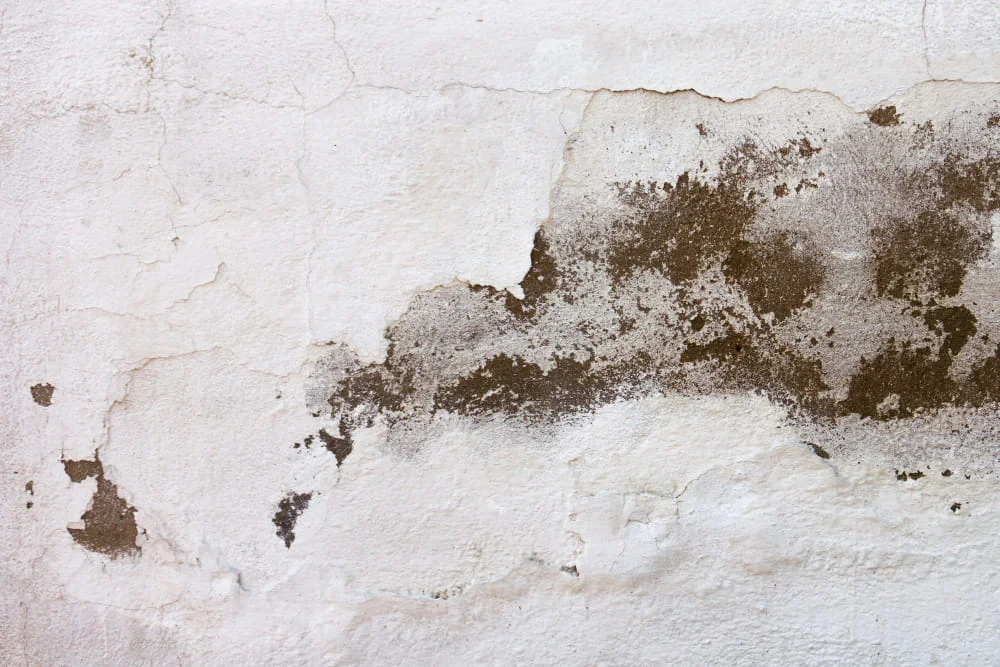Your Complete Mold Prevention Strategy
Demystifying mold from a certified inspector's perspective—control moisture, control mold.
1. What Mold Needs to Grow (The Recipe)
Mold is a natural fungus, but it becomes a problem when it sets up camp indoors. This section breaks down the three simple ingredients it needs. Your power lies in controlling the most critical one: moisture.
1. Water/Moisture (Critical)
The essential fuel. Mold thrives when surfaces are damp or when indoor humidity climbs above 55%. This is why prompt water damage restoration is crucial to prevent mold growth.
2. Food Source
Mold is non-discriminating: it feeds on organic materials like wood, paper on drywall, fabrics, insulation, and even common household dust.
3. Temperature
Mold grows comfortably within the same range as humans, between 40°F and 99°F, making temperature difficult to control.
2. Detection & Where Mold Loves to Hide
Use your senses as your first defense. A musty smell or visual signs of water damage can point to a problem. Knowing the hotspots lets you anticipate where to look first.
How to Spot Mold
Look for a persistent, musty odor, often described as wet cardboard, damp clothing, or an earthy scent. If you smell it but can't see it, the mold is likely hidden nearby. Consider scheduling a professional mold inspection to identify hidden growth.
Look for discolored patches (black, green-brown, white, pink, yellow) on walls or ceilings. The texture can be slimy, wet, powdery, or fuzzy. Also check for secondary signs of moisture like cracked paint, bubbling wallpaper, or warped walls. If you spot black mold, immediate professional removal is essential.
In sensitive individuals, mold exposure can cause wheezing, nasal congestion, irritation of the eyes/nose/throat, or skin rashes. If symptoms persist only when you're at home, consider professional mold testing to identify the specific type and concentration.
Common Mold Hotspots
| Location in Home | Primary Moisture Source |
|---|---|
| Basement | Basement flooding, foundation seepage, high humidity. |
| Bathroom | High humidity/steam from showers, poor ventilation. Consider bathroom remodeling with proper ventilation. |
| Kitchen | Leaks under sinks, steam from cooking. Leak repair is essential. |
| Attic | Leaking roofs, trapped warm, moist air. Address ceiling water damage immediately. |
| Around Windows | Condensation build-up on sills and panes. |
3. Taking Action: Cleanup & Professionals
Before you clean, know your limits. This section defines when a problem is small enough for DIY cleaning and, more importantly, when you must call a professional to ensure safety and completeness.
🚨 The Independence Imperative
NEVER let the same company perform both testing (inspection) and cleanup (remediation).
It creates a financial conflict of interest. An independent, certified mold inspector gives you unbiased results. A company that does both has an incentive to exaggerate the problem to increase their cleanup fee. Our team provides independent inspections separate from mold remediation services.
🔴 Call a Professional If...
- The affected area is larger than 10 sq ft - requires professional mold remediation
- Mold is in your HVAC system or air ducts - specialized equipment needed
- Mold resulted from sewage or floodwater - contamination hazard
- Someone in the house has a respiratory condition or known sensitivity - health risk priority
🟢 DIY Safe Cleanup (Small Areas)
- Protect Yourself: Wear gloves and non-porous goggles.
- Clean the Area: Scrub the mold with non-ammonia soap and hot water.
- Dry Thoroughly: Use fans/dehumidifiers. This is critical for mold prevention!
- Dispose: Bag extensively moldy porous items (e.g., drywall) before discarding.
⚠️ Do NOT mix ammonia and bleach! For larger areas, contact our certified remediation team.
📞 Need Professional Mold Inspection or Remediation?
Our certified team provides independent mold inspections and complete mold remediation services across Florida. We also offer emergency mold mitigation to stop damage fast.
Contact Us Today4. Prevention Checklist: Keep Your Home Dry
Prevention is the most powerful tool. By completing this checklist, you are actively making your home an unwelcome environment for mold by controlling moisture and humidity. Use the checklist to track your progress.
Your Proactive Maintenance Tasks
Control Moisture & Humidity
- Fix all water leaks promptly (roofs, pipes, faucets) - Use our leak repair services for quick fixes
- Use dehumidifiers to keep indoor humidity low (ideally ≤ 50%) - Critical for mold prevention
- Run exhaust fans during/after showers and while cooking
Promote Good Airflow
- Ensure attic/basement have adequate ventilation
- Open windows for circulation when weather permits
General Home Maintenance
- Keep your home clean and dust-free (dust is a food source)
- Dry any water-damaged areas completely within 24-48 hours - Use emergency water removal if needed
- Check ground slope to direct rainwater away from the foundation

